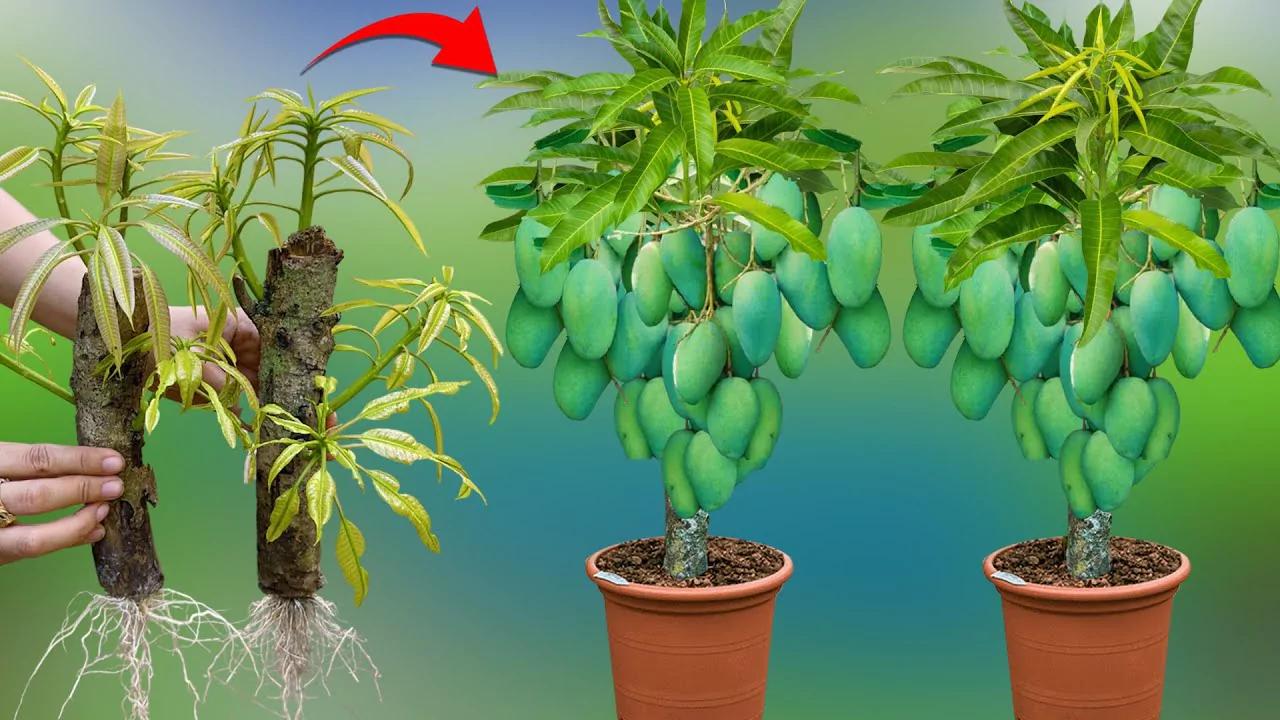
Curious whether an indoor mango plant can be cultivated? It’s possible. This evergreen tree yields of perhaps the most delicious fruit, and while you may never see its production, it makes for an appealing houseplant and can serve as an engaging undertaking.
Although native to Southern Asia, mangoes are now grown in virtually all subtropical and tropical regions of the world after being spread by monks and explorers. Considered to be one of the most fragrant and sweetest fruits, mangoes certainly hold a special place in beverages and desserts.
In addition to being enjoyed dried or fresh, the mango fruit blends well with sweet recipes like smoothies and sorbets as well as savory ones like salsas or sauces.
In tropical settings, mango trees reach a height of 30 to 100 feet which not suitable for most home growers. However, if kept in a large pot paired with occasional pruning, it is possible to maintain a bushy shrub-like form that is visually appealing while exhibiting glossy leaves.
The fastest commercially grown mangoes bear some fruit in six to seven years but growing them indoors poses challenges due to lack of warm temperatures and sunlight. Moreover, flowering mango plants exude some substances likely volatile which might lead to allergic symptoms or respiratory problems for some individuals.
To grow a mango at home, follow the steps below:
- Pick a ripe fruit from the store. The seeds from fully ripe fruits germinate faster than those obtained from firm, unripe, and under tempered mangoes.
- Next, scrape any leftover residue with the flesh squeezer. Cut open the outer coat and extract the inner part gently using a chisel or sharp knife which contains the seed pod.
- Place two small toothpicks 1/8 inch into each side of the seed so that it rests in a pint sized jar filled with water to half its volume. Let the pit remain dry while resting on top of the jar through a toothpick strut.
- Give it two weeks for growth where you are required to add water occasionally to maintain levels below filth line of structure.
- Upon seeing small white sprouts, remove your slice of mango and put it in a ten gallon pot. Ensure good drainage and provide regular access to oxygen through controlled watering so that it remains evenly damp at all times.
- Mist/spray your plant too using fresh water so that leaves stay clean and maintaining humidity alongside regularly watering creates optimal evergreen conditions.
- During summer months, use a water-soluble fertilizer for houseplants but only feed balanced fertilizers to the mango plant once a month. Reduce watering during winters and do not apply any fertilizer.
- In order to maintain compact size and enhance the appearance of the mango plant, periodically pinch the top leaves off.
- To promote fruiting, place mango plants under grow lights in winter season.
Similar to growing an avocado tree from avocado seeds, growing an indoor mango tree from seed is unpredictable. For better outcomes, fill a large pot with soil and consistently keep it moist after planting the seed.
Simulate a tropical climate and be patient as it can take several years for flowering or fruiting. As with many other plants, there are no guarantees on whether the plant will bear fruits or flowers.